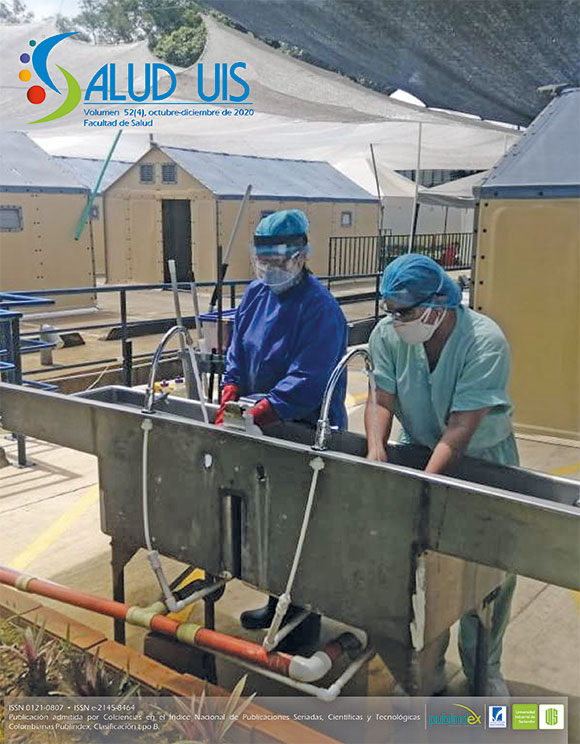Abstract
Introduction: According to the literature, the amount of osteons has been suggested as a good proxy to determine the age of death in adults. However in subadults research has not been carried out yet. Objective: To determine the accuracy of the histomorphometric technique predicting the age at death in subadults using bone remains. Methodology: The information of static histomorphometric parameters from about 120 iliac bones retrieved from the exhumed remains of subadults whose age at death was known was taken from the Granada collection. In order to predict the age at death we performed a step by step linear regression to estimate the fittest model. Results: The most closely and significantly associated biopsy findings with age were: the osteon count, the internal cortical width, and the trabecular bone volume. Pearson’s correlation index indicated a weak linear association among these variables. To assess the accuracy of the model we used a coefficient of determination with a 0.32 value. 32% of the age variation in the subadults was explained by the three variables. Conclusion: this regression model explains a percentage of the total age variation in the subadult population. However this model is not enough to determine the age at death.
References
2. Kerley ER. The microscopic determination of age in human bone. Am J Phys Anthropol. 1965; 23(2): 149-163. doi: 10.1002/ajpa.1330230215
3. Aiello LC, Molleson T. Are microscopic ageing techniques more accurate than macroscopic ageing techniques? J Archaeol Sci. 1993; 20(6): 689-704. doi: https://doi.org/10.1006/jasc.1993.1043
4. Thompson DD. The core technique in the determination of age at death of skeletons. J Forensic Sci. 1979; 24(4): 902-915.
5. Baltadjiev G. Micromorphometric characteristics of osteons in compact bone of growing tibiae of human fetuses. Cells Tissues Organs. 1995; 154(3):181-185. doi: 10.1159 / 000147767
6. Streeter M. A Four-stage method of age at death estimation for use in the subadult Rib Cortex. J Forensic Sci. 2010; 55(4): 1019-1024. doi: 10.1111/j.1556-4029.2010.01396.x
7. Streeter M. Histomorphometric characteristics of the subadult rib cortex: Normal patterns of dynamic bone modeling and remodeling during *growth and development. University of Misouri-Columbia; 2005.
8. Agnew A. Histomorphological aging of subadults: a test of streeter’s method on a medieval archaeological population. Ohio State University; 2006.
9. Alemán I, Irurita J, Valencia AR, Martínez A, López-Lázaro S, Viciano J, et al. Brief communication: the Granada osteological collection of identified infants and young children. Am J Phys Anthropol. 2012; 149(4): 606-610. doi: 10.1002/ajpa.22165
10. Valencia AR, Esquevias J. Técnica histológica en huesos de subadultos como posible predictor de edad. Propuesta de protocolo. Universidad de Granada, Granada, España; 2009.
11. Crowder C, Stout S, Stout S. Bone histology an antropology perspective. 1 ed. CRC Press; 2011.
12. Compston JE, Mellish RWE, Garrahan NJ. Age-related changes in iliac crest trabecular microanatomic bone structure in man. Bone. 1987; 8(5): 289-292. doi: https://doi.org/10.1016/8756-3282(87)90004-4
13. Rauch F, Travers R, Parfitt AM, Glorieux FH. Static and dynamic bone histomorphometry in children with osteogenesis imperfecta. Bone. 2000; 26(6): 581-589. doi: 10.1016/s8756-3282(00)00269-6
14. Thompson DD. Microscopic determination of age at death in an autopsy series. J Forensic Sci. 1981; 26(3): 470-475.
15. Ahlqvist J, Damsten O. A modification of Kerley’s method for the microscopic determination of age in human bone. J Forensic Sci. 1969; 14(2): 205-212.
16. Singh IJ, Gunberg DL. Estimation of age at death in human males from quantitative histology of bone fragments. Am J Phys Anthropol. 1970; 33(3): 373-381. doi: 10.1002/ajpa.1330330311
17. Ericksen MF. Histologic estimation of age at death using the anterior cortex of the femur. Am J Phys Anthropol. 1991; 84(2): 171-179. doi: 10.1002/ajpa.1330840207
18. Watanabe Y, Konishi M, Shimada M, Ohara H, Iwamoto S. Estimation of age from the femur of Japanese cadavers. Forensic Sci Int. 1998;98 (1-2): 55-65. doi: 10.1016/s0379-0738(98)00136-4

This work is licensed under a Creative Commons Attribution 4.0 International License.
Copyright (c) 2020 Alba Rocio Valencia Valderrama, Javier Esquivias, Miguel Botella, Iván Trujillo

